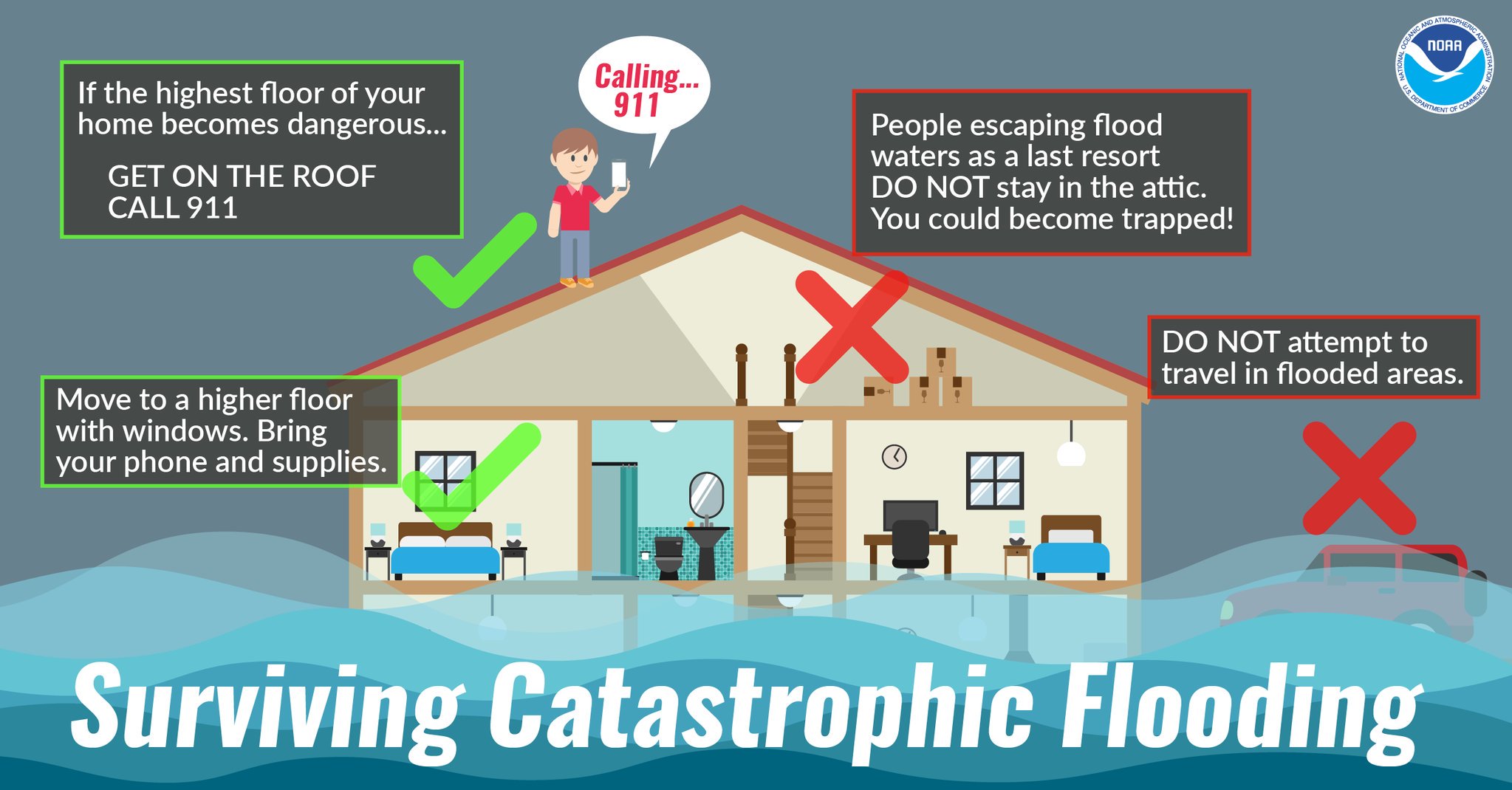How Flood Alerts Work And How To Stay Safe

Table of Contents
How Flood Alerts Work: The Technology and Systems Behind the Warnings
Flood alerts aren't just random warnings; they're the result of sophisticated monitoring and prediction systems. Let's explore the science and technology behind these life-saving alerts.
Monitoring Systems
Accurate flood prediction relies on a network of monitoring systems constantly collecting hydrological data. This includes:
- Rain Gauges: Measure rainfall intensity in specific locations, providing crucial data for localized flood risk assessment.
- River Level Sensors: Continuously monitor water levels in rivers and streams, identifying potential overflow and flooding.
- Satellite Imagery: Provides a wide-area view, allowing meteorologists to track storm systems and assess potential flood zones.
- Weather Radar: Detects precipitation patterns and intensity, helping predict rainfall accumulation and potential flooding.
Meteorological agencies, using advanced weather forecasting models and this data, play a critical role in analyzing the information and creating accurate flood forecasts. Their expertise in hydrological data analysis is essential for issuing timely and effective flood alerts.
Data Analysis and Prediction
The collected data isn't simply observed; it's rigorously analyzed using sophisticated flood forecasting models. These models incorporate various factors, including:
- Rainfall Intensity and Duration: Heavier and prolonged rainfall significantly increases flood risk.
- Soil Saturation: Already saturated ground absorbs less water, leading to quicker runoff and increased flood potential.
- Topography: The shape of the land influences water flow, with low-lying areas being more vulnerable to flooding.
- River Flow Rates: Monitoring river flow helps predict potential overflow and downstream impacts.
Through hydrological modeling and advanced data analysis, these models predict potential flood events, allowing for the timely issuance of flood alerts. This process involves careful risk assessment to determine the severity and potential impact of a flood.
Alert Dissemination
Once a flood risk is identified, the crucial next step is disseminating the flood alerts effectively. This is achieved through a multi-pronged approach, utilizing:
- Weather Apps: Many weather apps provide real-time alerts and forecasts, including specific flood warnings for your area.
- Emergency Alert Systems: Government-issued emergency alerts, such as NOAA's Wireless Emergency Alerts (WEA), directly notify mobile devices.
- Social Media Alerts: Many agencies utilize social media platforms to share crucial information and flood safety alerts rapidly.
- Local News: Television, radio, and local news websites play a significant role in broadcasting flood alerts and keeping the public informed.
The use of multiple communication channels ensures that flood alerts reach a wide range of people, including those who might not otherwise receive the warnings.
Staying Safe During a Flood: Essential Preparedness and Evacuation Strategies
Being prepared is key to surviving a flood. Taking proactive steps before, during, and after a flood drastically improves your chances of safety.
Pre-Flood Preparation
Proactive flood preparedness is paramount:
- Develop a Family Emergency Plan: This plan should include designated evacuation routes, meeting points, and communication strategies.
- Identify Safe Locations: Know the highest points in your home and identify community shelters or evacuation centers.
- Gather Essential Emergency Supplies: Stockpile enough water, non-perishable food, a first-aid kit, medications, and important documents.
Having a well-defined emergency plan and readily available emergency kit can significantly reduce stress and improve your ability to respond effectively during a flood. Understanding your potential evacuation routes is crucial.
Responding to Flood Alerts
Understanding the difference between alert levels is critical:
- Flood Watch: Conditions are favorable for flooding; monitor conditions and be prepared to take action.
- Flood Warning: Flooding is occurring or is imminent; take immediate action, and if necessary, evacuate.
- Flood Advisory: Flooding is possible in specific areas; monitor conditions and be cautious.
When a flood warning is issued, timely evacuation is often the safest course of action. Follow instructions from local authorities and emergency services.
Post-Flood Safety
Even after the floodwaters recede, significant dangers remain:
- Avoid Floodwater: Floodwater may contain harmful contaminants, debris, and dangerous currents.
- Check for Hazards: Inspect your home and property for structural damage, downed power lines, and other hazards.
- Report Damage: Contact local authorities to report damage and seek assistance.
Proper post-flood safety procedures are crucial to prevent further injury and damage during the cleanup and recovery process.
Conclusion: Proactive Flood Alert Monitoring for Enhanced Safety
Understanding and responding to flood alerts is crucial for protecting yourself and your community. By preparing in advance, understanding the different alert levels, and taking appropriate action, you can significantly reduce the risks associated with flooding. Remember to create a family emergency plan, gather essential supplies, and monitor weather conditions closely. Sign up for flood warnings and other flood safety alerts in your area through your local emergency management agency or weather service. Don't be caught off guard; learn more about flood alerts and how to protect yourself. Stay safe and informed—sign up for flood alerts today!

Featured Posts
-
 March Of The Living Hostages Berger And Weiss To Attend
May 26, 2025
March Of The Living Hostages Berger And Weiss To Attend
May 26, 2025 -
 Italian Open 2024 Zheng Qinwens Semifinal Triumph
May 26, 2025
Italian Open 2024 Zheng Qinwens Semifinal Triumph
May 26, 2025 -
 Nationwide Tennis Participation Surges Over 25 Million Players Projected By August 2024
May 26, 2025
Nationwide Tennis Participation Surges Over 25 Million Players Projected By August 2024
May 26, 2025 -
 Hells Angels Motorcycle Club Fact Vs Fiction
May 26, 2025
Hells Angels Motorcycle Club Fact Vs Fiction
May 26, 2025 -
 Mwnakw Yjdd Eqd Mynamynw Mwsm Idafy Fy Alimart
May 26, 2025
Mwnakw Yjdd Eqd Mynamynw Mwsm Idafy Fy Alimart
May 26, 2025
